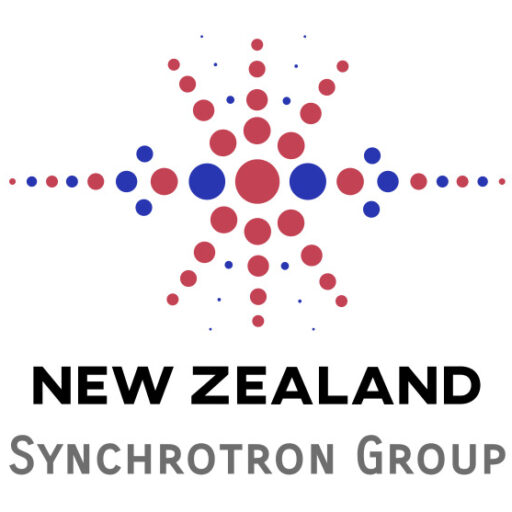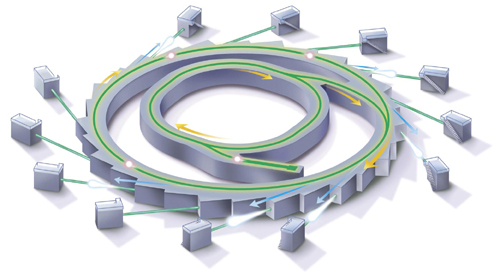What is a synchrotron and how is it used?
A synchrotron is a large research facility that generates an extremely intense beam of electromagnetic radiation (‘light’) that can be used for scientific experiments. The radiation is produced by taking a stream of electrons travelling at close to the speed of light, and deflecting them with magnetic fields. The light covers the electromagnetic spectrum from the infrared to the hard x-ray region.
Electrons are generated in the linear accelerator (linac), and progress into the smaller ‘booster’ ring, where they are further accelerated up to their final velocity. At this point they are ‘injected’ into the larger storage ring, where they circulate for a period of hours to days. The electron beam is steered and focused by magnetic fields. At each point where the beam is deflected, electromagnetic radiation is produced tangential to the beam path. ‘Insertion devices’, undulators and wigglers, are periodic magnet structures that serve to increase the radiation flux by up to five orders of magnitude. The radiation produced can be used in many different experiments and techniques.
Synchrotron radiation can be used to probe the nano, molecular, and atomic scales for a range of scientific applications. The information gained about the structure and composition of materials or systems leads to understanding of properties, process and function. For example, the structure of proteins and other biomolecules can be used in drug design. As another example, the crystal structure and defects in semiconductors can dramatically affect their electrical conductivity.
What other synchrotrons are there around the world?
Synchrotron radiation was first observed in the 1940s and facilities have evolved progressively; the first serious exploitation of synchrotron light was in the 1960s.
As scientists became aware of its great potential as a tool for conducting a wide variety of leading edge experiments, development accelerated dramatically – particularly over the past twenty years – with the building of a number of second-generation and, from the early 1990s, third-generation facilities.
At present there are about 50 major facilities worldwide, with a number of others under construction or planned.
Some of the largest third-generation facilities are:
- Advanced Light Source (ALS), Berkeley, USA
- Advanced Photon Source (APS), Chicago, USA
- Australian Synchrotron, Melbourne, Australia
- Beijing Synchrotron Radiation Facility (BSRF), China
- Berliner Elektonenspeicherring-Gesellschaft für Synchrotronstrahlung (BESSY), Berlin, Germany
- Canadian Light Source (CLS), Saskatoon, Canada
- Diamond Light Source, Oxford, UK
- ELETTRA, Trieste, Italy
- European Synchrotron Research Facility (ESRF), Grenoble, France
- National Synchrotron Light Source (NSLS), New York, USA
- National Synchrotron Radiation Research Centre (NSRRC), Taiwan
- Photon Factory, Tsukuba, Japan
- SOLEIL, France
- Spring-8, Japan
- Stanford Synchrotron Radiation Laboratory (SSRL), USA
- Swiss Light Source (SLS), Switzerland



See this link for a list of synchrotron facilities.



